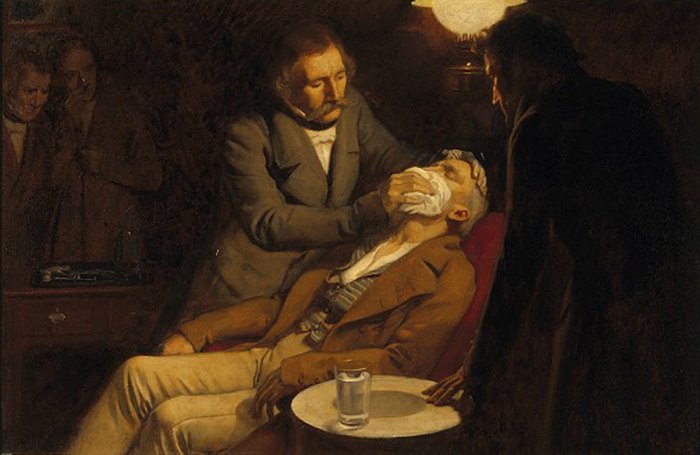History of anaesthesia
Anaesthesia is one of the greatest discoveries of modern medicine. In fact, many of today’s operations, especially for the very young, very old, or very ill would not be possible without it.
Relief of pain and suffering is central to the practice of anaesthesia. The word anaesthesia is coined from two Greek words: "an" meaning "without" and "aesthesis" meaning "sensation".
Despite an increase in the complexity of surgical operations, modern anaesthesia is relatively safe due to high standards of training that emphasise quality and safety. In addition, there have been improvements in drugs and equipment. Increased support for research to improve anaesthesia has resulted in Australia and New Zealand having one of the best patient safety records in the world.
The origins of anaesthesia
An ancient Italian practice was to cover a patient’s head with a wooden bowl and beat on it repeatedly until the patient lost consciousness. Presumably this method resulted in a number of side-effects the patient would not have found beneficial.
Opium and alcohol were regularly used to produce insensibility, both of which also had a number of negative side effects and neither could dull the pain completely. Few operations were possible and speed was the determinant of a successful surgeon. Patients were often tied or held down and the abdomen, chest and skull were effectively inoperable. Surgery was a last, and extremely painful, resort.
The advent of modern anaesthesia

The first use of ether as an anaesthetic in 1846 by W.T.G. Morton. Wellcome Images.
On October 16, 1846, an American dentist, William Morton, proved to the world that ether causes complete insensibility to pain during an operation performed in front of a crowd of doctors and students at the Massachusetts General Hospital. Morton instructed the patient to inhale the ether vapour and, once the patient was suitably sedated, a tumour was removed from his neck. The patient felt no pain.
This demonstration transformed medical practice.
News of Morton’s demonstration spread quickly in the pre-technological world. Within two months, London doctors Francis Boott and James Robinson had performed a tooth extraction using ether and two days after that, Robert Liston performed an amputation. Their exploits were written up the following January in the London Illustrated News which reached Australia in May 1847.
Anaesthesia arrives in Australia and New Zealand
Launceston doctor, William Russ Pugh, and Sydney dentist, John Belisario, fashioned ether inhalers based on the diagram in the newspaper.
On June 7, 1847, Pugh successfully performed two operations under ether anaesthesia while Belisario performed two dental surgeries. Both had journalists present.
Ether was first used in New Zealand on September 27, 1847, when Colonial Surgeon James Patrick Fitzgerald performed a dental extraction on a prisoner at the Wellington gaol.
On the same day, Fitzgerald also performed New Zealand’s first general surgical operation on an anaesthetised patient. During both procedures, the ether was administered by Mr James Marriott, an optical instrument maker, using a vapouriser of his own design.
Ether anaesthesia not only resulted in a better surgical experience for the patient, it also allowed doctors time during surgery to develop more refined and complex surgical skills.